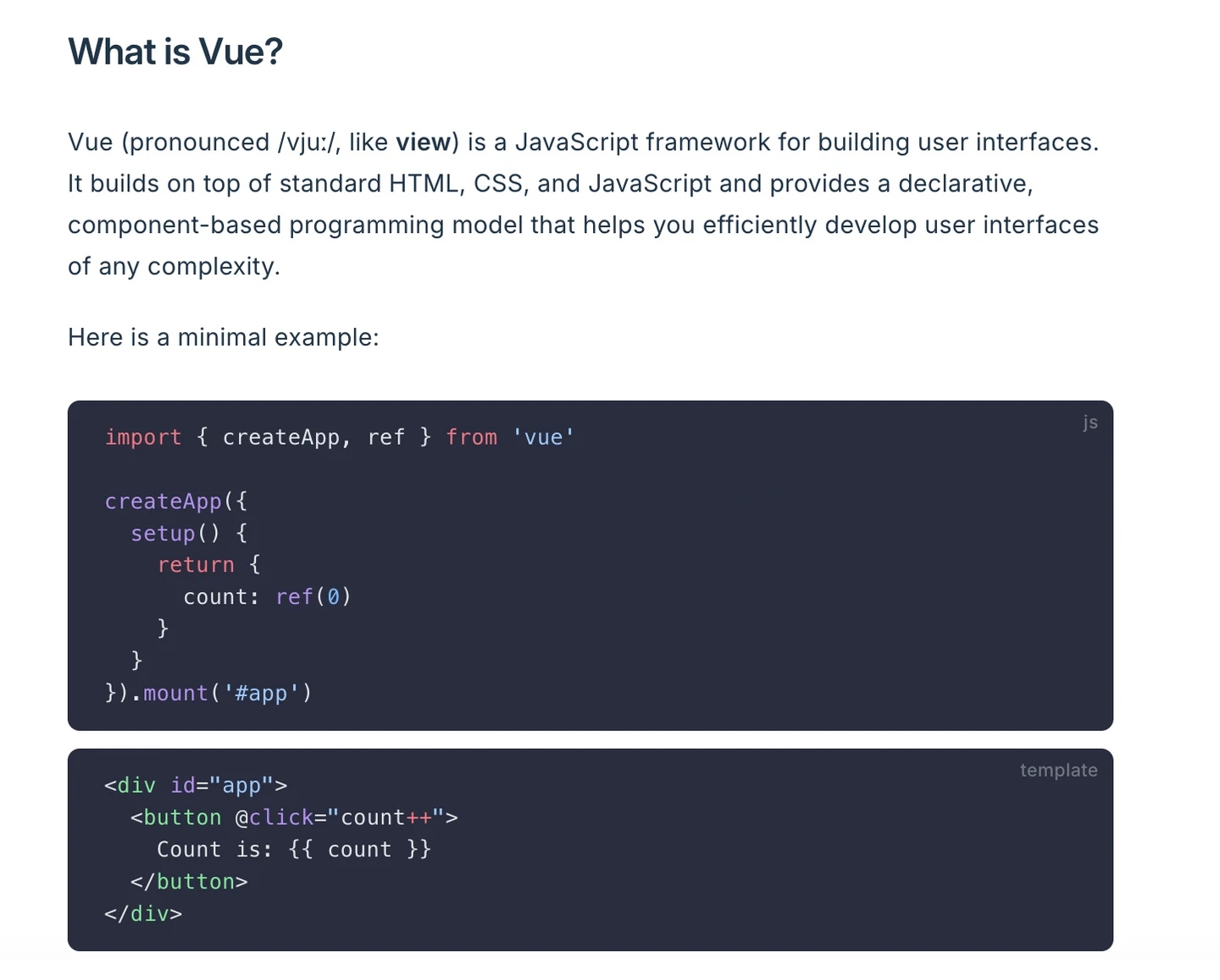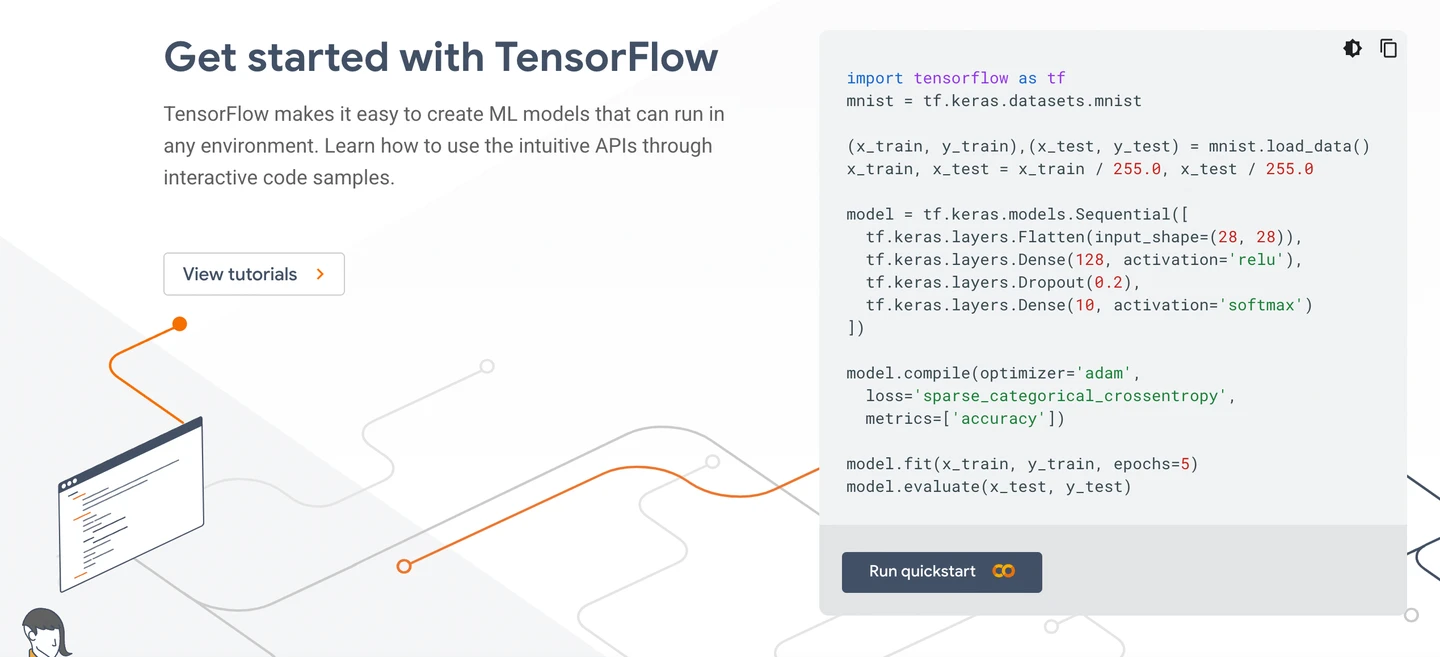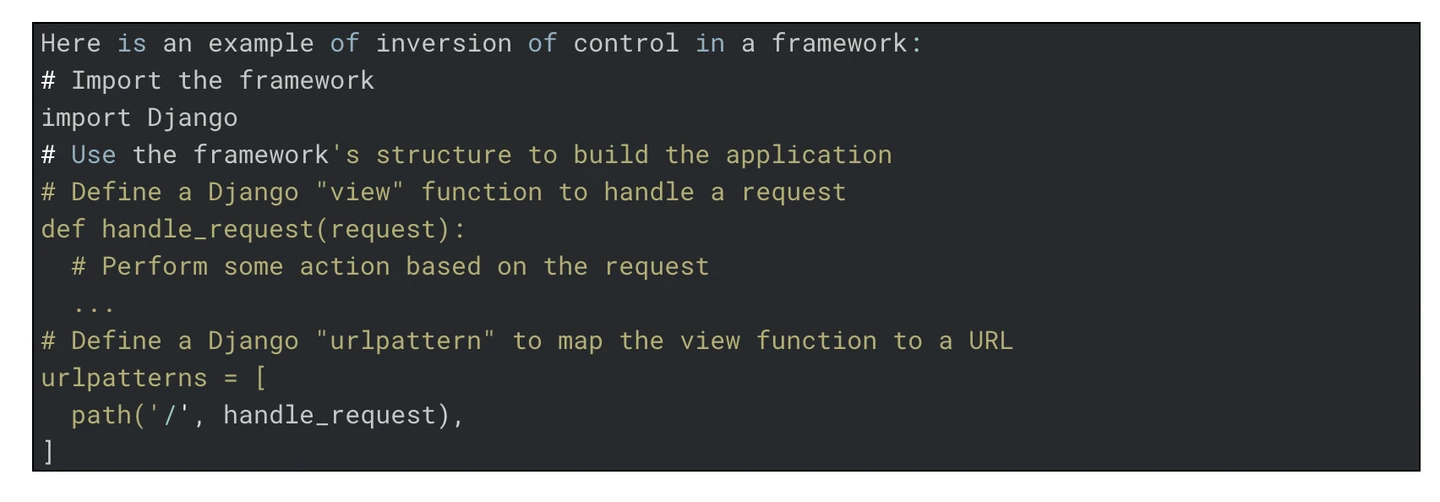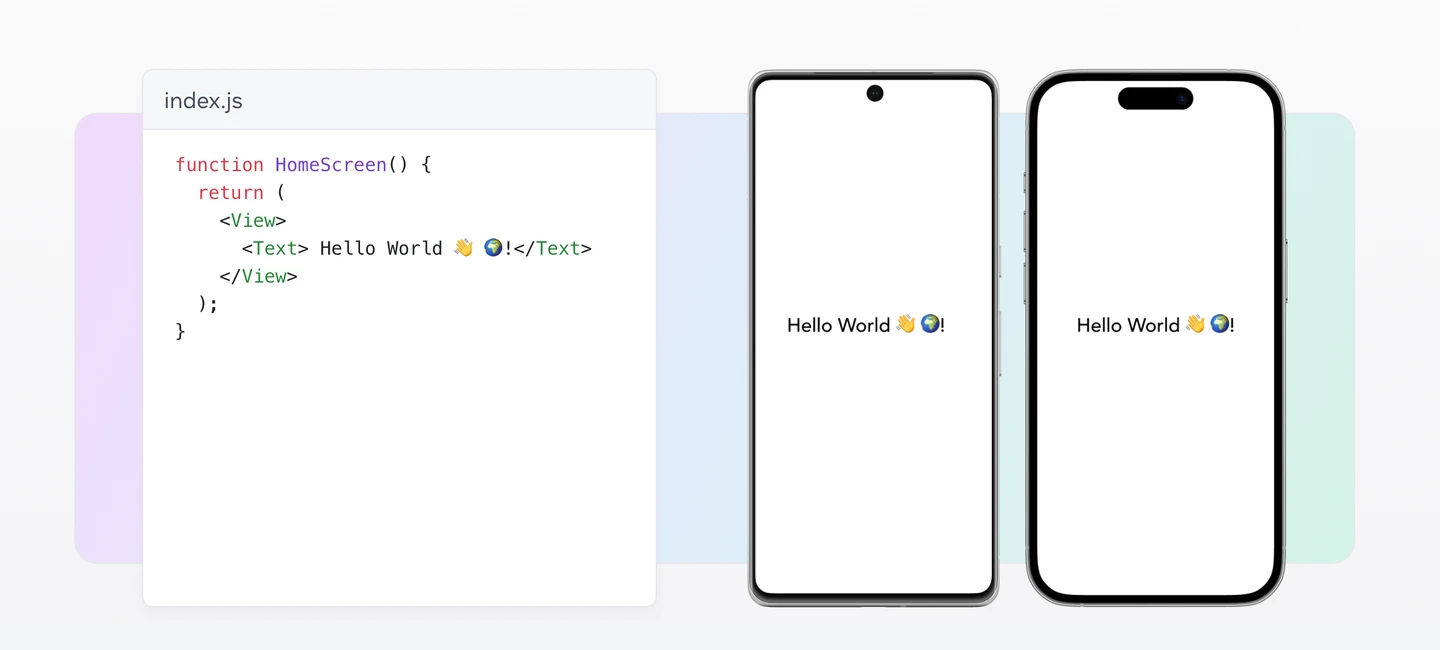What is a framework? Types, benefits, and how they work
Curious about frameworks? Come explore what they are, the different types that exist, why they’re essential in development, and the many benefits they bring.
Written by Lucie Simonova

Curious about frameworks? Come explore what they are, the different types that exist, why they’re essential in development, and the many benefits they bring.
Written by Lucie Simonova

In this blog, we’ll take a deep dive into the world of frameworks, which play a crucial role in modern software development. We’ll explore what frameworks are, why they’re so important, and the different types available for web development, mobile apps, and data science. Along the way, you’ll learn about the benefits of using frameworks and get guidance on how to choose the right one for your projects. Let’s dive in!
The answer to what is a framework? can vary depending on the context. Speaking generally, a framework is a structure that serves as a foundation or support for building something. You can think of it as a blueprint or set of guidelines that help organize and guide development.
To understand the definition of a framework a bit better, let’s take a look at Jiri Lojda, our Integration Engineer, as he explains it the following video:
In technical terms, a framework refers to a set of tools and best practices used to build software applications. It provides pre-written code and components that streamline the development process, so developers don’t have to start from scratch every time they build something.
Frameworks in software development make life easier by speeding up the process. Instead of starting from scratch, developers can focus on the unique challenges of their app. With reusable components and standardized processes, frameworks not only save time but also help build apps that are consistent, secure, and scalable.
Now that we’ve covered what a framework is and its role in software development, let’s dive deeper into why frameworks are so crucial in the development process. In this section, we’ll explore the key benefits of frameworks—time-saving, efficiency, and standardization—and how they contribute to smoother and more successful development projects.
Time-saving
One of the biggest benefits of frameworks is the significant time-saving they offer. Instead of reinventing the wheel with each project, developers can use pre-built components and structures, allowing them to focus on the unique parts of their application. This leads to faster development cycles, reduced errors, and quicker time to market for products.
Efficiency
Efficiency is another key advantage. By providing a structured approach, frameworks reduce the need for repetitive coding, making sure that developers can produce clean and maintainable code. In addition, frameworks often come with built-in testing and debugging tools, which can make development smoother and more predictable.
Standardization
The importance of using frameworks also lies in standardization. Frameworks establish best practices and guidelines, ensuring consistency across different parts of a project. This is especially helpful when teams collaborate, as it ensures that everyone is on the same page, following the same structure and conventions.

Modern web frameworks are a game-changer, simplifying complex low-level concepts with intuitive APIs that let developers achieve their goals with far less code. However, each framework has its own philosophy and style, meaning what suits one developer might not work as well for another. Fortunately, the variety available today—whether you need something lightweight, feature-packed, or tailored for building dynamic, static, or interactive web experiences—ensures there’s a perfect fit for every project and preference.
Tomas Vorel
Senior Web Developer, Kontent.aiWhen you’re working on a development project, you’ll often encounter the terms frameworks and libraries. While they both help developers save time and avoid duplicating effort, there’s a key difference that affects how and when you use them.
Both are pre-written support programs designed to simplify the process of developing complex software applications. However, while libraries focus on providing specific functionality, a framework offers a complete structure to guide the development of an entire application.
If you need to perform a specific function, you pick the library that helps you get the job done, where you’re still in control of the flow of your application, deciding when and how to use the given library. For example, if you’re building a website and need to pull in data from another source, you might use a library like Axios or jQuery to help with that. These libraries provide pre-written code that makes the task easier, but you still control how and when to use that code within your project.
On the other hand, a framework is more comprehensive. It provides a foundation and structure for your application, dictating how your project should be organized. When you use a framework, you’re essentially working within the guidelines the framework sets up. For instance, if you’re building a larger application, you might choose to use a framework like Angular or Django. These frameworks provide a structure for your entire app, guiding how the code is organized and how different components interact with each other.
When to use one over the other?
For a small or straightforward project that requires specific functionality, a library might be the better choice. It offers flexibility, allowing developers to quickly implement the necessary features without too much complexity or extra work.
However, for a more complex or large-scale project that demands a solid structure and standardized approach, a framework would be more suitable. A framework provides guidance throughout the development process, enforces best practices, and handles many repetitive tasks automatically.
Frameworks come in different forms, each designed to address specific development needs. Let’s start by exploring web frameworks, and then we’ll discuss other types of frameworks and how they support different areas of development.
Web frameworks are essential for creating websites and web applications efficiently. They provide ready-to-use components and guidelines that simplify common tasks like managing users, handling data, and displaying pages.
Here are some popular web development frameworks and what they bring to the table:

While web frameworks focus on building websites, mobile application frameworks are designed to help developers create apps for smartphones and tablets. These frameworks simplify the process of making apps that can run smoothly on different devices and operating systems, such as Android and iOS.
Popular mobile application frameworks include:
Flutter
Created by Google, Flutter allows developers to build apps for both Android and iOS from a single codebase. This means that developers don’t need to create one app specifically for Android and another for iOS. Instead, they can write a single set of code that works on both operating systems. This approach saves time and ensures the app looks and works the same across different devices.
React Native
A framework developed by Meta, React Native is also used to build apps for multiple platforms with one codebase. Unlike Flutter, which uses its own rendering engine, React Native integrates directly with the native components of Android and iOS, making apps feel natural on each platform. It’s a popular choice especially for developers already familiar with the programming language JavaScript.
Xamarin
Owned by Microsoft, Xamarin helps developers create apps that work across Android, iOS, and even Windows devices. It integrates well with other Microsoft tools, making it a strong choice for businesses already using their products. It’s a solid choice for creating apps that need to run smoothly across different operating systems while leveraging the power of the Microsoft ecosystem.
Data science frameworks are tools that help developers and data scientists analyze large sets of data, build predictive models (a type of system or algorithm that uses past data to make predictions about future events or outcomes), and create intelligent systems.
These frameworks make complex tasks like machine learning and artificial intelligence (AI) easier by providing pre-built solutions for common problems. Let’s explore a few popular frameworks used in data science.
PyTorch
Created by Facebook, PyTorch is a popular framework for machine learning. It’s especially known for being user-friendly and flexible, making it a go-to choice for researchers and developers experimenting with AI. PyTorch allows for easy building and training of models that learn from data, making it a great choice for applications like image recognition or natural language processing.
Apache Spark
Apache Spark is a fast and powerful tool for processing large volumes of data. It’s often used in big data analysis, where you need to analyze huge datasets quickly. Spark helps with tasks like sorting, searching, and processing data in real-time, making it ideal for applications that rely on fast decision-making, such as recommendation systems, which are commonly used in platforms like Amazon, Netflix, and YouTube to recommend items such as movies, products, or songs that users are likely to enjoy.
TensorFlow
Developed by Google, TensorFlow is a framework used for building machine learning models, which are systems that learn from data to make predictions or decisions. It’s particularly powerful for deep learning, a type of machine learning that uses neural networks to mimic the way the human brain makes complex decisions.

Frameworks help developers build software more efficiently by providing pre-written code and structures to follow. They set up the basic foundation, allowing developers to focus on customizing features and adding unique elements. But how exactly do frameworks function? Let’s dive into two important concepts: inversion of control and extensibility.
Inversion of control in frameworks
In traditional programming, the developer writes the main flow of the program and controls when certain actions happen. However, in frameworks, the control is flipped. In other words, the framework controls the flow, and the developer fills in the details.
To imagine it a bit better, you might want to think of it like going on a guided tour. The tour guide (the framework) decides the path and schedule for the day, but the attendees (the developers) choose how they want to experience each stop, whether it’s taking photos, learning more about the landmarks, or engaging with other tourists. In this case, the tour guide controls the flow of the tour, while the people fill in the details with their personal touch.
This approach saves time and ensures that the basic structure is consistent, while giving developers the flexibility to add their unique touches.

Extensibility in software frameworks
Extensibility means that a framework can be expanded or customized as needed. However, while developers can build on top of the framework, they generally cannot change the core, pre-written code. This helps maintain stability and consistency in the software. For example, a developer might create additional features on top of a framework but cannot alter how the framework handles basic tasks. This makes sure that the framework can grow with the project without breaking its foundation.
Now that we’ve covered the way frameworks function, let’s take a look at some key building blocks that make up a framework.
A framework is made up of several components that work together to make the development process easier, faster, and more organized. These framework components provide the building blocks for developers to create software without having to start from scratch. Let’s look at some key components that make up a framework.
Libraries
A library is a collection of pre-written code that developers can use to perform common tasks. As mentioned before, unlike a framework, where the framework controls the flow of the application, a library is used as needed. For example, if a developer needs to handle user authentication or manage data in a database, they can use a library that already includes those functions. Libraries save time by providing ready-made solutions for common tasks, so developers don’t need to write the code themselves.
APIs (Application Programming Interfaces)
APIs are like bridges that allow different software systems to communicate with each other. A framework may include APIs to connect with databases, external services, or other software tools. APIs simplify the development process by allowing developers to integrate existing technologies without having to rebuild them.
Templates
Templates are pre-designed structures or layouts that developers can customize to build their application. For example, a framework might provide a template for a website homepage, which developers can then modify to suit their needs. Templates help developers get started quickly by giving them a foundation to build on, rather than having to design everything from scratch.
Tools
Frameworks often come with tools that automate common tasks, such as testing, debugging, or managing code versions. These tools make development more efficient and reduce the chances of errors, making sure that the software is built and maintained smoothly.
Using frameworks brings several key advantages to the development process, making it easier, faster, and more efficient to create high-quality software. Let’s explore the benefits of using frameworks and how they can improve the overall development experience.
Enhanced efficiency and speed in development
Frameworks provide pre-written code and templates that save developers time. This means they don’t have to start from scratch or reinvent the wheel for every new project. With the foundation already in place, developers can focus on customizing and building the unique features of their application, speeding up the overall development process.
Consistent structure and quality of code
Frameworks establish certain structures and best practices, making sure that the code follows a uniform pattern. This consistency helps developers write cleaner, more organized code, which is easier to read and maintain. It also reduces the risk of bugs or errors because developers are following tried-and-tested approaches for building software.
Focus on problem-solving rather than repetitive tasks
One of the biggest advantages of frameworks is that they take care of repetitive tasks, such as managing data or handling user authentication. This allows developers to focus more on solving the unique problems of their project, rather than getting stuck in routine coding tasks.
Scalability and maintainability of applications
As applications grow in size and complexity, frameworks make it easier to scale and maintain them. They provide clear guidelines and reusable components that make sure the application can grow without becoming difficult to manage. Frameworks also make it easier to update or improve the software over time, as their structure promotes good practices that keep the codebase organized.
Frameworks are actively used to power some of the most well-known applications and services. Whether it’s a large-scale website, a mobile app, or an AI-driven recommendation system, frameworks provide the structure and efficiency needed to bring ideas to life.
From social media platforms to online shopping, web and mobile applications power much of our digital experience. Here are some top frameworks in software development and how they are used in real-world applications.
Django: Rapid development for secure applications
Django stands out as a powerful framework known for its speed and security that developers can use to build feature-rich, secure applications. It is often used for developing news websites, and fintech apps, where security and fast development are crucial. In industries like finance and healthcare, Django’s security features, combined with its ability to scale, make it a top choice for businesses handling sensitive data.
Django is also commonly used for developing social networks. For example, companies like Instagram rely heavily on it for their backend—the part of the app or website users don’t see, but which is crucial for managing data and ensuring everything runs smoothly. With Django, Instagram is able to build a platform capable of handling massive amounts of user data and traffic efficiently.
Flutter: Streamlining mobile app development across platforms
For mobile app development, Flutter has gained significant traction due to its ability to build apps for both iOS and Android from a single codebase. Developed by Google, Flutter is a UI toolkit that enables developers to create visually appealing and responsive mobile applications.
An app like Google Ads demonstrates Flutter’s capabilities by allowing advertisers to manage campaigns seamlessly on both mobile platforms. With Flutter’s hot reload feature, developers can instantly see changes made to the code, which significantly speeds up development and testing.
Laravel: Building complex web applications with ease
When it comes to developing secure, scalable web applications, Laravel is a popular choice for developers. Laravel is particularly favored by companies looking to create content management systems (CMS), e-commerce platforms, or Software as a Service (SaaS) solutions.
For instance, a company building a custom e-commerce store would use Laravel to manage customer accounts, product listings, and payment processing. Its scalability makes it ideal for growing businesses, as it can handle a large amount of data and user traffic while maintaining security.
React Native: Building cross-platform mobile apps
Another top choice for mobile app development is React Native, a JavaScript-based framework created by Meta. React Native allows developers to build cross-platform mobile apps with the look and feel of native applications. By using native components, React Native ensures that apps built with the framework deliver the same high-quality user experience as native apps.
React Native is particularly suited for companies that need to maintain both a web and mobile presence with minimal duplication of code. For example, Airbnb, Facebook, and Instagram have all leveraged React Native to maintain consistent apps across iOS and Android, while sharing code between platforms.
Instagram uses React Native for their mobile app’s frontend, which is the part users interact with directly. While Instagram’s backend is powered by Django, as mentioned earlier, React Native handles the user interface and ensures the app works seamlessly on both iOS and Android devices.

Frameworks play a crucial role in data science and AI by providing the tools needed to process large datasets, train machine learning models, and build intelligent applications. These frameworks simplify complex tasks, allowing data scientists and engineers to focus on insights and innovation rather than building everything from scratch.
TensorFlow
This machine learning framework is commonly used in AI-powered applications, including image recognition, chatbots, and self-driving cars. A well-known use case is Google Photos, which uses TensorFlow for facial recognition and automatic photo categorization.
Apache Spark
Many companies dealing with large-scale data analytics rely on Apache Spark. A great example is Netflix, which uses Spark to analyze vast amounts of user data and improve its recommendation system. It helps process real-time and historical data to personalize movie and show suggestions.
With so many frameworks available, selecting the right one can feel overwhelming. The best choice depends on the specific needs of a project, as different frameworks offer different strengths. Some prioritize speed and flexibility, while others focus on security, scalability, or ease of use. Below is a simple framework selection guide to help make an informed decision.
Performance and scalability
One of the most important factors in how to choose a framework is performance. A framework should be able to handle the expected workload without slowing down. Scalability is also key—meaning the framework should support growth if the project expands.
For instance, Django is often chosen for web applications that expect high traffic because it includes built-in tools for handling large amounts of data efficiently.
Community support and documentation
A strong community makes a framework easier to work with. Popular frameworks like React Native and TensorFlow have large communities, meaning developers can easily find solutions, tutorials, and updates. Good documentation is equally important, as it helps both beginners and experienced users navigate the framework effectively.
Ease of use
Some frameworks are beginner-friendly, while others require deep technical knowledge. Laravel, for example, is known for its simplicity and developer-friendly syntax, making it easier for new users to adopt. On the other hand, more complex frameworks like TensorFlow require a strong understanding of data science concepts.
Framework customization: Can frameworks be tailored?
Every project has unique requirements, so it’s important to assess how customizable a framework is. Some frameworks allow extensive modifications, while others enforce stricter rules. For example, Vue.js is highly customizable, giving developers flexibility in how they structure their applications. However, frameworks like Angular provide a more rigid structure, which can be beneficial for maintaining consistency in large teams but may limit customization options.
By considering these factors—performance, scalability, community support, ease of use, and framework customization—it becomes easier to make an informed choice. The right framework should align with project goals while allowing enough flexibility for future growth.
Whether it’s building a website, a mobile app, or testing software, there are frameworks designed to fit each need. So, which frameworks are best suited for various types of projects?
For building websites and web applications, Laravel, Django, and Express.js are popular choices. It is great for building secure and scalable web applications, while Django is known for handling complex data-driven websites like social networks. Express.js is a lightweight option that works well for building fast, flexible web applications.
For creating mobile apps, frameworks like Flutter, React Native, and Xamarin allow developers to build apps that work on both Android and iOS. Flutter is known for its smooth animations and custom UI designs, React Native is widely used for apps like Facebook and Instagram, and Xamarin is a great choice for businesses already using Microsoft technologies.
When testing software, frameworks like Selenium, JUnit, and PyTest help automate the process. Selenium is widely used for web testing, JUnit is great for testing Java applications, and PyTest makes it easy to test Python-based projects.
Which frameworks are best for beginners?
For those just getting started, Vue.js is often recommended for web development because of its simple syntax and flexibility. For mobile apps, Flutter is beginner-friendly due to its clear documentation and easy-to-use components. If testing is the focus, Selenium is a good starting point as it supports multiple programming languages.
In this overview of frameworks, we’ve seen how they lay the groundwork for creating everything from websites to mobile apps and even AI models. Frameworks provide pre-built tools and a path for developers to follow, so they don’t have to figure out every single step on their own, and instead can focus on solving real problems rather than having to handle repetitive tasks.
The summary of framework benefits shows just how much the right framework can make a huge difference in the success of a project. Whether it’s a flexible web framework like Django, a mobile-friendly option like Flutter, or a powerful data science tool like TensorFlow, each framework is designed to streamline development and improve efficiency.
For those new to frameworks, the best way to learn is by exploring popular ones and starting with small projects. Trying out a beginner-friendly framework like Vue.js for web development or React Native for mobile apps is a great way to get hands-on experience.

What if we told you there was a way to make your website a place that will always be relevant, no matter the season or the year? Two words—evergreen content. What does evergreen mean in marketing, and how do you make evergreen content? Let’s dive into it.
Lucie Simonova

How can you create a cohesive experience for customers no matter what channel they’re on or what device they’re using? The answer is going omnichannel.
Zaneta Styblova

To structure a blog post, start with a strong headline, write a clear introduction, and break content into short paragraphs. Use descriptive subheadings, add visuals, and format for easy scanning. Don’t forget about linking and filling out the metadata. Want to go into more detail? Dive into this blog.
Lucie Simonova